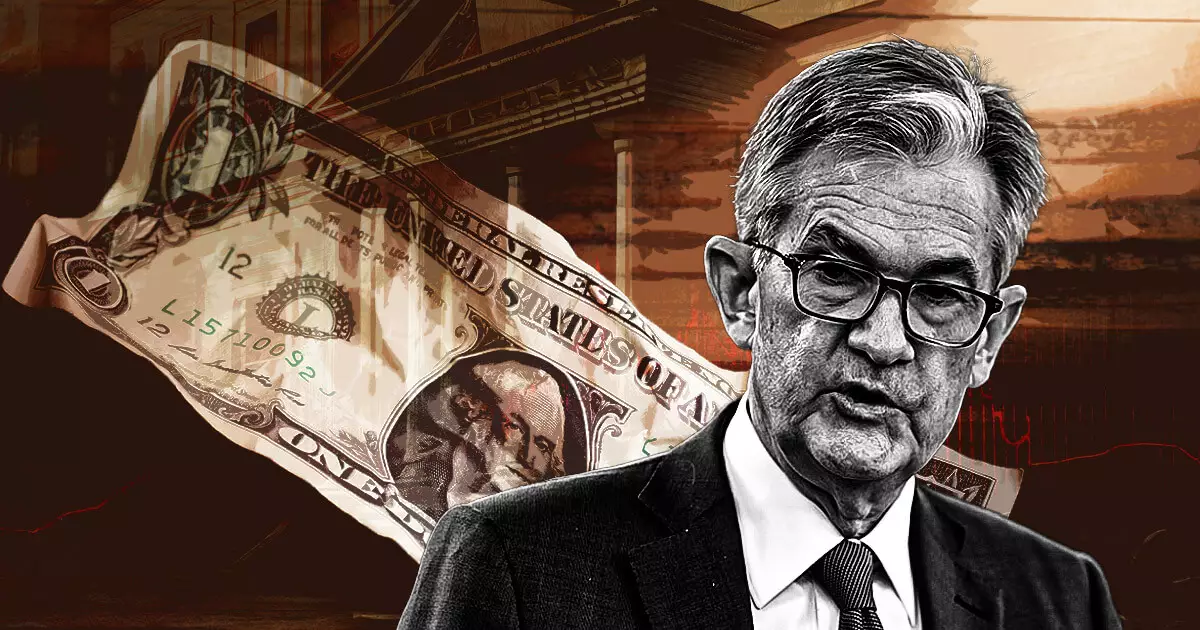In a financial landscape increasingly dominated by digital assets, Federal Reserve Chair Jerome Powell’s recent comments underscore a pivotal moment in regulatory discourse regarding stablecoins. Standing before The Economic Club of Chicago, Powell communicated a dual necessity: establishing a robust regulatory framework while ensuring that banks maintain their interactions with the nascent crypto sector. His remarks suggest a profound awareness that the current regulatory climate is evolving—not without its challenges, but also not without promise. It is incumbent upon Congress to move beyond previous inaction and recognize the implications of stablecoins, particularly with steady growth surpassing the $14 trillion mark in transfer volumes last year.
Stablecoins, poised as digital assets with the potential for widespread appeal, necessitate consumer protections and transparency. Powell’s observation that lawmakers are rekindling interest in formalizing regulations seems not just timely but critical. Yet, one must question whether this momentum will lead to nuanced legislation or merely replicate previous failures. The growing recognition of stablecoins as essential financial instruments highlights the urgent need to get it right, transforming apprehensive speculation into informed engagement.
Balancing Innovation With Consumer Safety
Powell’s acknowledgment of the regulatory complexities surrounding the integration of digital assets into traditional finance is a refreshing departure from the typically dismissive attitudes many in the establishment hold toward crypto. While his previous comments have suggested a conservative approach to digital asset efforts by US bank regulators, the door appears to be subtly widening. This undercurrent of support for “responsible innovation” indicates a crucial turning point in the Fed’s posture toward stablecoins and digital finance.
The call for a regulatory framework that emphasizes consumer safety while simultaneously promoting innovation is particularly striking. As someone who believes in the potential of technology to improve financial access, I find Powell’s comments both reassuring and essential. To stifle the dynamism of the crypto world through overreach would be a catastrophic error, creating barriers that unfairly hinder technological advancements and financial evolution. However, this necessary propulsion of innovation must come with adequate safeguards to ensure that consumers are protected from risks often associated with unregulated financial markets.
The Importance of Congressional Engagement
Notable is Powell’s insistence that both chambers of Congress are revisiting legislation pertaining to stablecoins. This acknowledgment signals a shift in the legislative landscape, framing policymakers as decision-makers in the ever-accelerating crypto dialogue. Key legislative proposals, like the GENIUS Act and the STABLE Act, are indicative of this newfound urgency. However, I remain skeptical: legislative progress is notoriously slow, and the bureaucracy surrounding it often gives rise to half-baked solutions that fail to account for rapid market evolution.
One must remain vigilant as Congress approaches this dynamic dialogue. A finely-tuned regulatory framework should be the goal, mixing potential innovation with the need for strict safety protocols. While attempts to reach an agreement often lead to compromise, it is vital that we avoid regulatory frameworks that inhibit growth or force innovation underground. The potential benefits of integrating stablecoins into the wider financial ecosystem are significant; failure to grasp them would leave the US lagging behind in the global financial arena.
The Shift in Regulatory Perspective
Powell has made it clear: the Federal Reserve’s position is not one of exclusion but rather a cautious endorsement of responsible innovation. The reality is that crypto is already integrated into the banking system under existing structures. Therefore, facilitating a more comprehensive oversight framework rather than limiting access becomes a crucial agenda.
This insight reveals an evolving mindset in regulatory bodies that I find immensely encouraging. Historically, the financial sector has been seen as adversarial to innovation, stifling new ideas at the altar of risk management. The Fed’s willingness to engage with traditional banking elements in relation to crypto signifies a recognition that adaptation is no longer optional. To thrive in an era dominated by rapidly changing technologies, regulators must embrace a culture of collaboration that promotes innovation while securing financial systems against potential destabilization.
In a digital financial landscape, as we craft policies that govern stability, transparency, and safety, it is essential that we remain committed to the principles that foster continuous innovation. Balancing the scales of oversight and growth can pave the way for the next chapter in finance, allowing American businesses to not just participate but lead the charge in global financial innovation.
















Leave a Reply